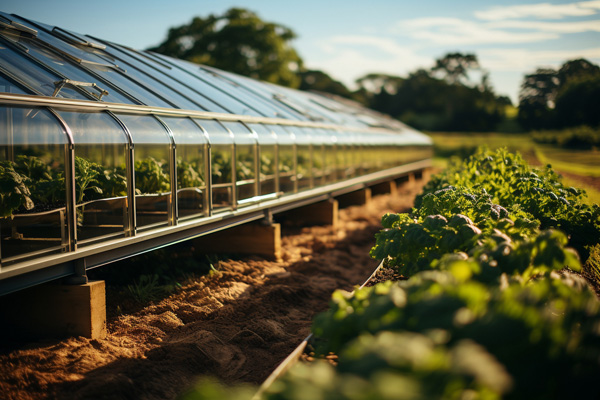- English
- Español
- Português
- русский
- Français
- 日本語
- Deutsch
- tiếng Việt
- Italiano
- Nederlands
- ภาษาไทย
- Polski
- 한국어
- Svenska
- magyar
- Malay
- বাংলা ভাষার
- Dansk
- Suomi
- हिन्दी
- Pilipino
- Türkçe
- Gaeilge
- العربية
- Indonesia
- Norsk
- تمل
- český
- ελληνικά
- український
- Javanese
- فارسی
- தமிழ்
- తెలుగు
- नेपाली
- Burmese
- български
- ລາວ
- Latine
- Қазақша
- Euskal
- Azərbaycan
- Slovenský jazyk
- Македонски
- Lietuvos
- Eesti Keel
- Română
- Slovenski
- मराठी
- Srpski језик
What is agrivoltaics and how do solar energy and agriculture work hand in hand?
A solar farm is an area filled with hundreds or thousands of solar panels facing the sun. While generating energy, solar panels cover the land, not entirely without gaps, but presenting an effect at a certain visual level. They are not completely flat on the ground; there are support structures and tilt points.
Traditional agriculture is a relatively high-risk business, as it heavily depends on weather and climatic conditions. If sunlight and rain are just right, without extreme storms or strong winds, there's income without worrying about all these environmental factors—this would be perfect. Besides conventional farming, solar farms have discovered another niche market—agricultural photovoltaics (APV). This is a fantastic idea for both environmentally conscious agricultural conglomerates and societies.
Earlier research has been conducted near Lake Constance, bordering Switzerland, Germany, and Austria. Over the course of a year, the pilot project used 720 dual-sided solar modules, covering approximately one-third of a hectare. Researchers installed the solar panels at a sufficient height so that crops could receive nearly the same amount of sunlight as in natural growth conditions. This benefits electricity generation while allowing the use of appropriate mechanical farming techniques.
Tests have proven that agriculture and photovoltaics can be compatible. It reduces competition for land and improves efficiency, providing farmers with additional income. One of the main reasons farmers turn to solar agriculture is the guaranteed economic returns and a stress-free lifestyle. Even if natural conditions are incompatible with the needs of crops, photovoltaic installations can work alongside traditional agriculture and bring in income.
There is also a technology that utilizes solar panels to construct greenhouse structures. By using differentiated arrangements and placements of solar panels, partial translucency can be achieved. This not only provides shading but also significantly reduces the energy requirements of such agricultural photovoltaic greenhouses. Agricultural photovoltaics represent a new way of combining solar technology with traditional agriculture, meeting its own needs while benefiting society.





